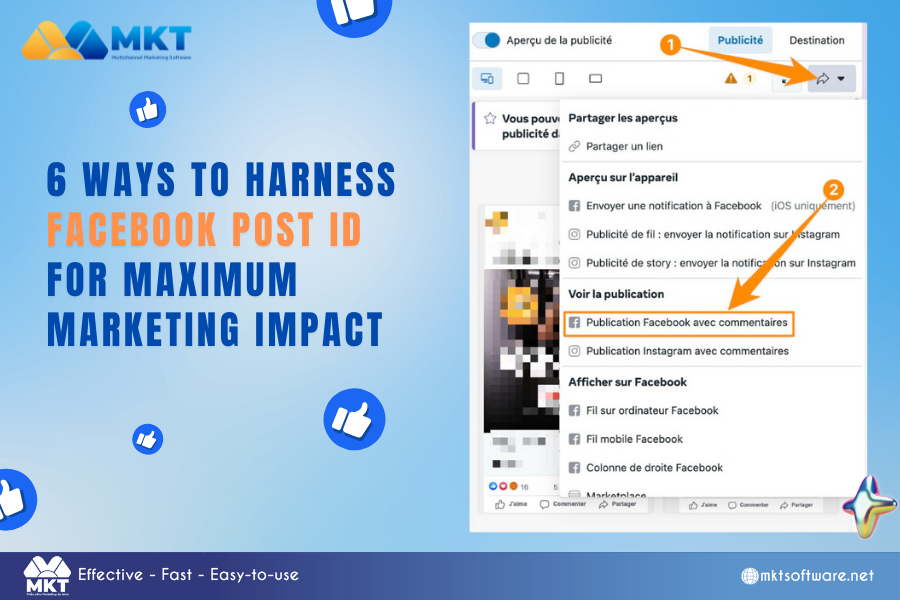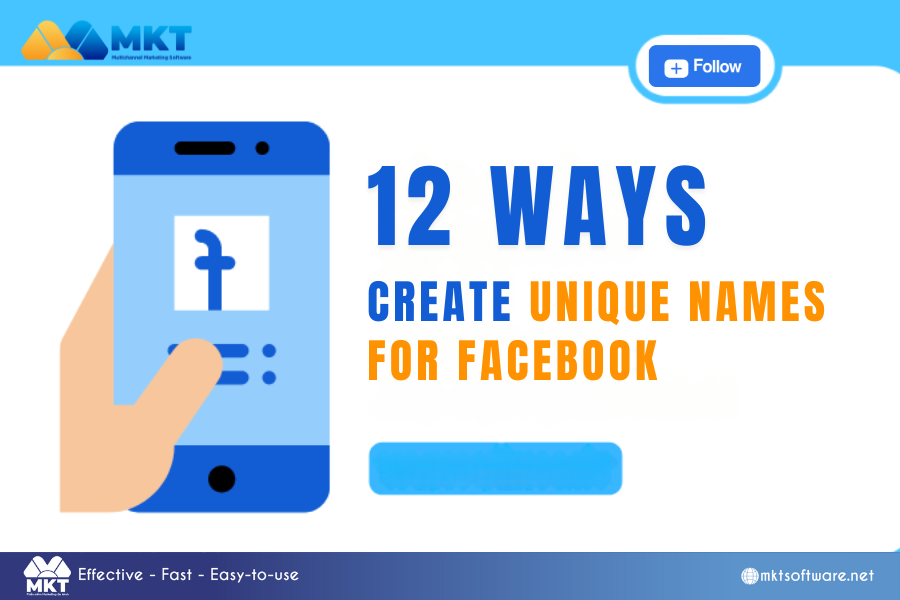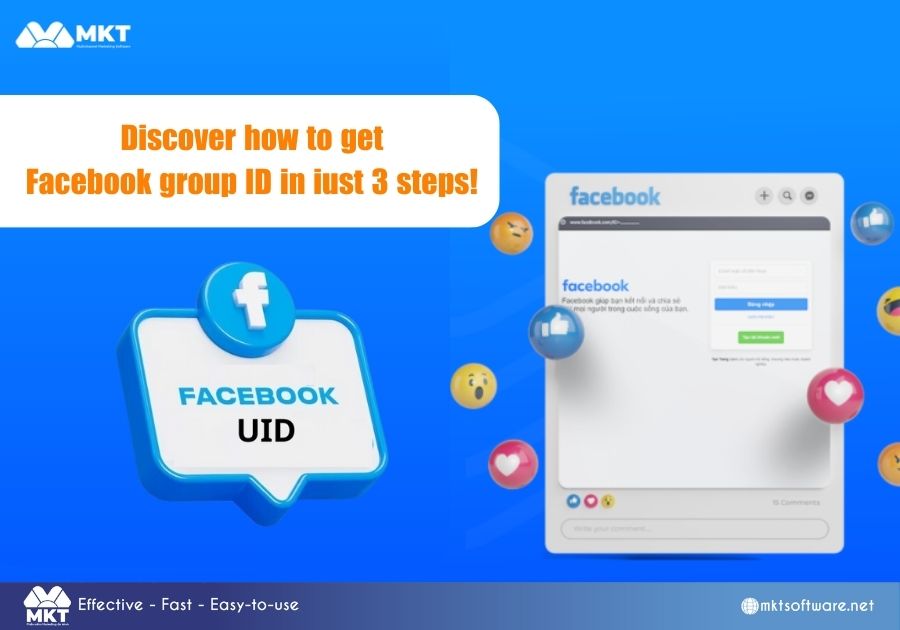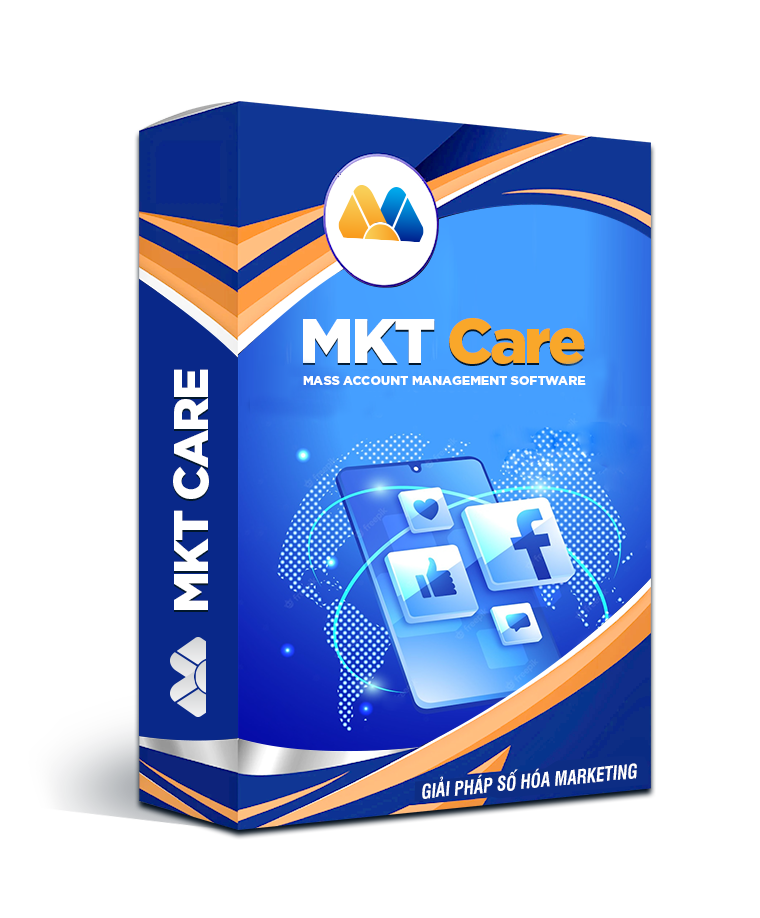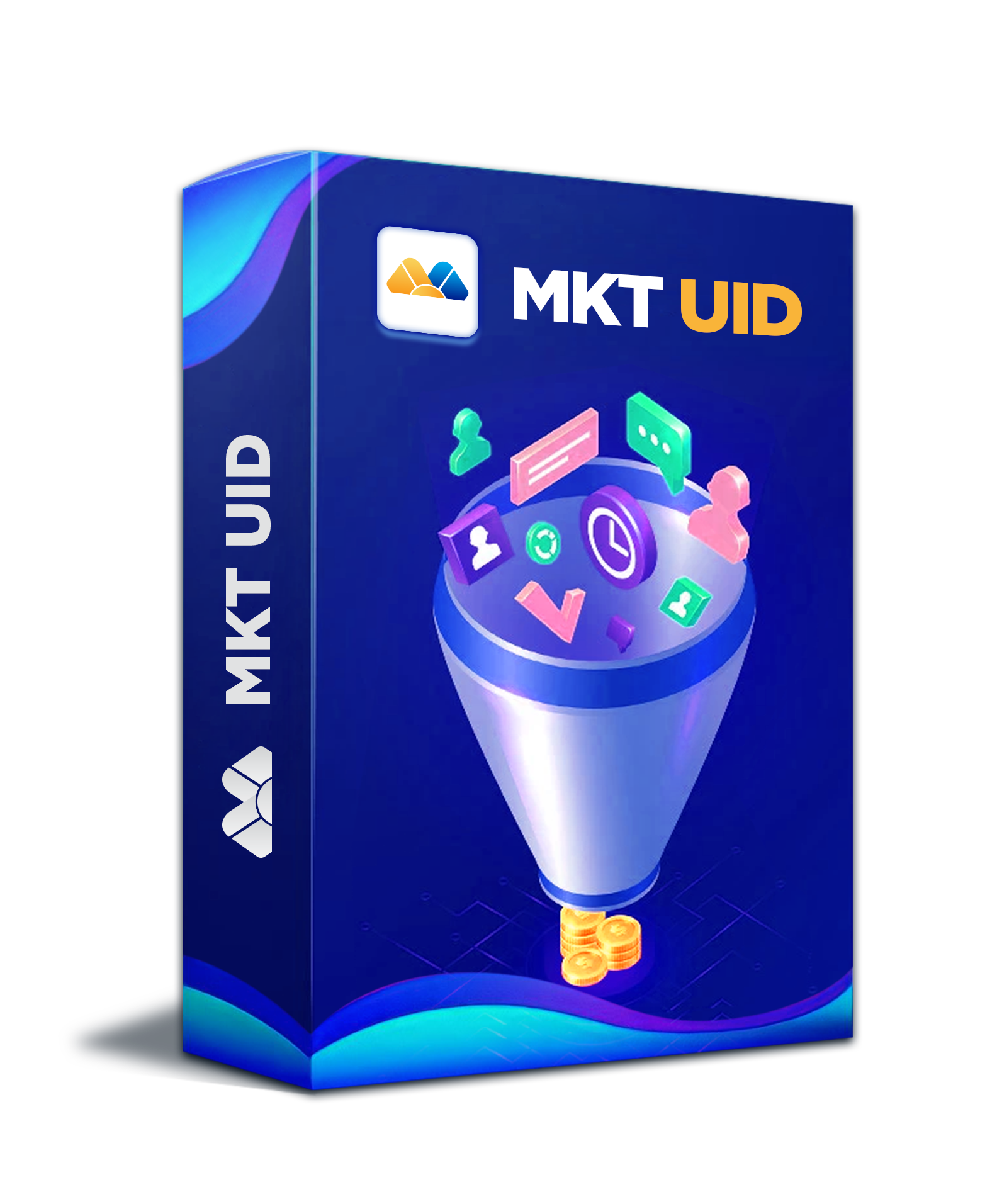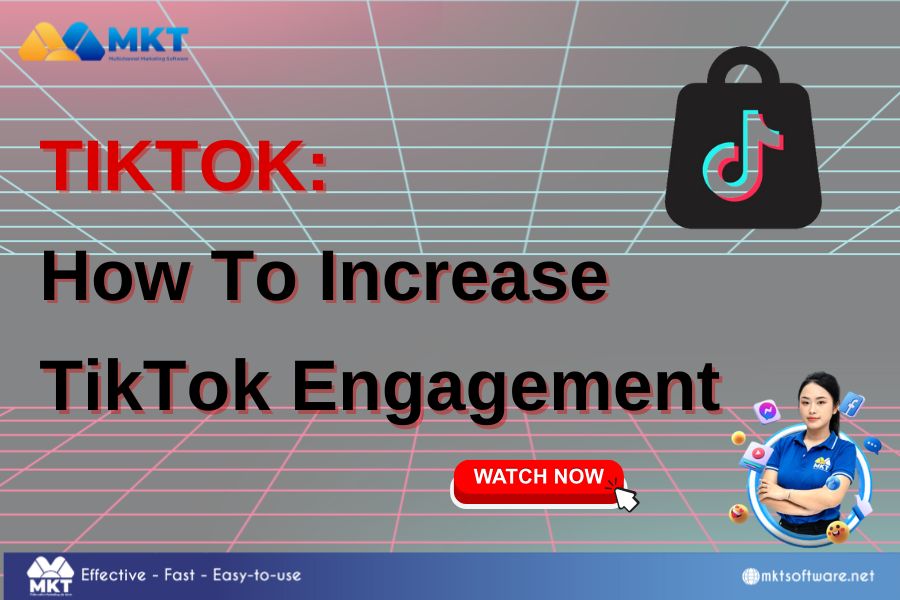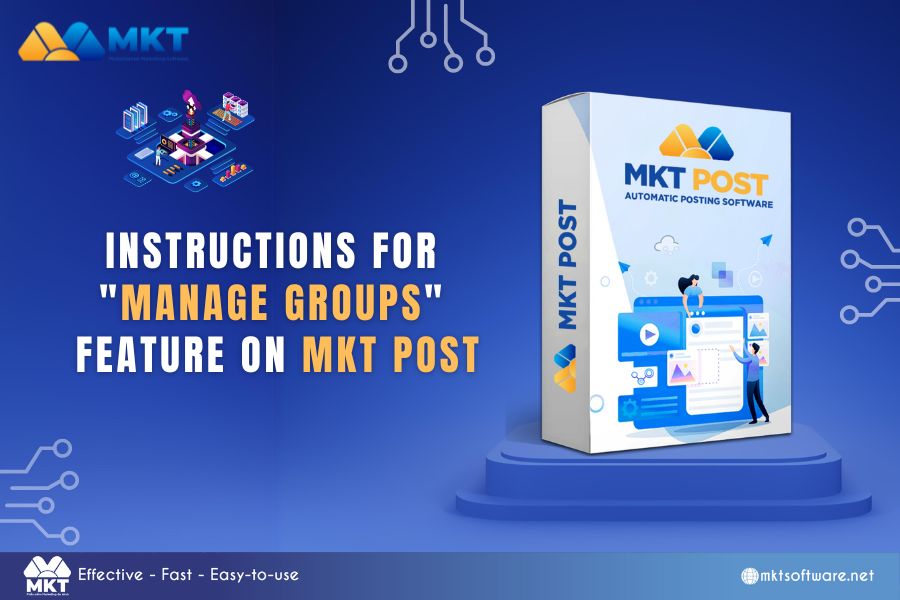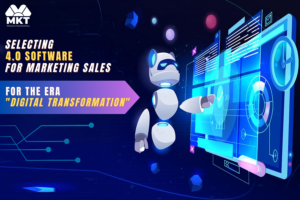The gaming industry is witnessing tremendous growth. As the competition in the gaming sector intensifies, simply having a standout game is no longer sufficient. To achieve the pinnacle of success, game developers must master effective game marketing strategies. MKT Software will explore some of the most effective video game marketing strategies in the gaming industry, designed to help reach a diverse audience of gamers across different age groups and backgrounds.
Table of Contents
Toggle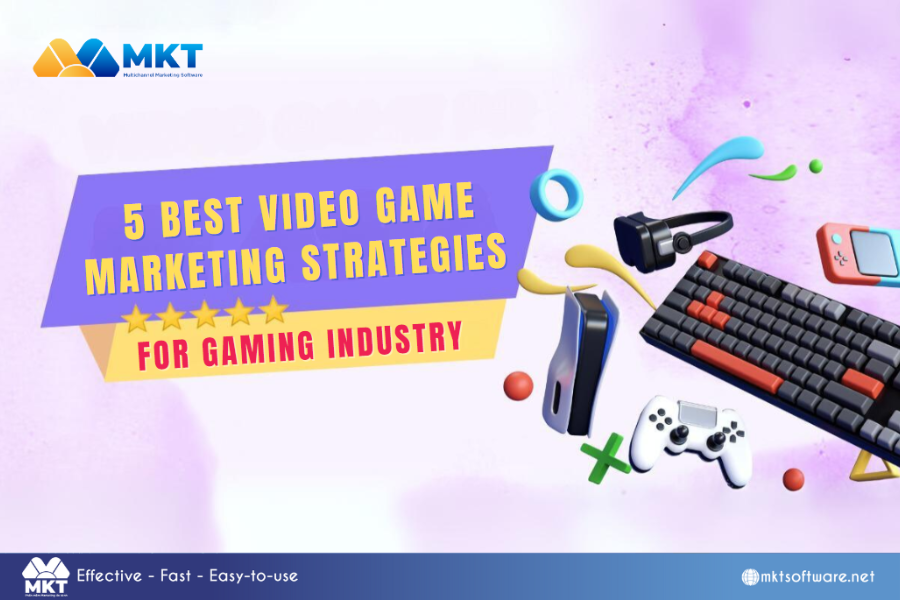
I. Understanding the Video Game Market
The foundation of successful video game marketing lies in a deep understanding of your target audience – who they are, where they’re from, what their interests are, and what motivates them. This begins with a thorough analysis of the demographic and psychographic profiles of the gaming market.
1. Demographics
Demographics pertain to statistical data that reflects the characteristics of a population or specific groups within it. These are tangible, measurable facts about a group, such as age, gender, income, education level, and geographic location. Here’s an overview of these elements in the gaming market:
- Age: Video gaming is no longer just a hobby for children. According to a 2021 report by the Entertainment Software Association, the average age of a video game player now falls between 35-44 years. This indicates a broad age range, extending from children to adults, making it essential to cater to various age groups in your marketing approach.
- Gender: The gaming audience is almost evenly split, with 46% female and 53% male, so avoid overly targeting one gender unless your game is gender-specific.
- Geographic location: Gaming is global, with the Asia-Pacific region having the most gamers, followed by North America and Europe. Localization is key to reaching different regions effectively (NewZoo’s 2022 Global Games Market report)
- Income and education: These factors influence the types of games people play and their willingness to spend, with higher income and education levels often linked to a preference for premium or complex games.
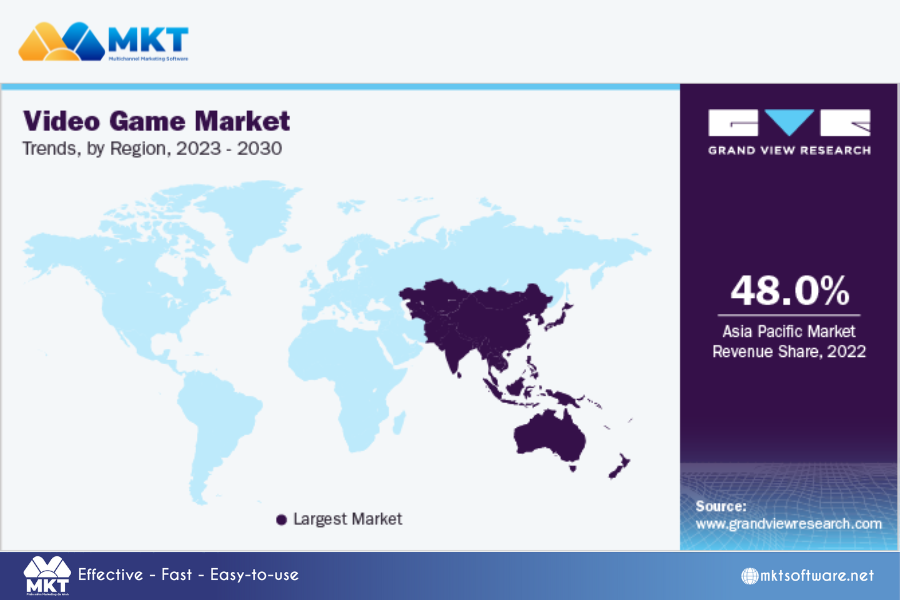
2. Psychographics
Psychographics go beyond demographics, exploring gamers’ interests, values, and habits:
- Preferences: Knowing whether your audience prefers expansive adventures or quick mobile games helps shape your game and its marketing.
- Motivations: Understanding whether gamers are driven by competition, escapism, or problem-solving can strengthen your marketing message.
- Lifestyle and habits: Insights into when and how your audience plays – long sessions vs. short bursts, or following influencers – can optimize your marketing timing and placement.
- Community engagement: Many gamers seek community through forums, social media, and in-game chats. Engaging effectively with these communities is essential for successful marketing.
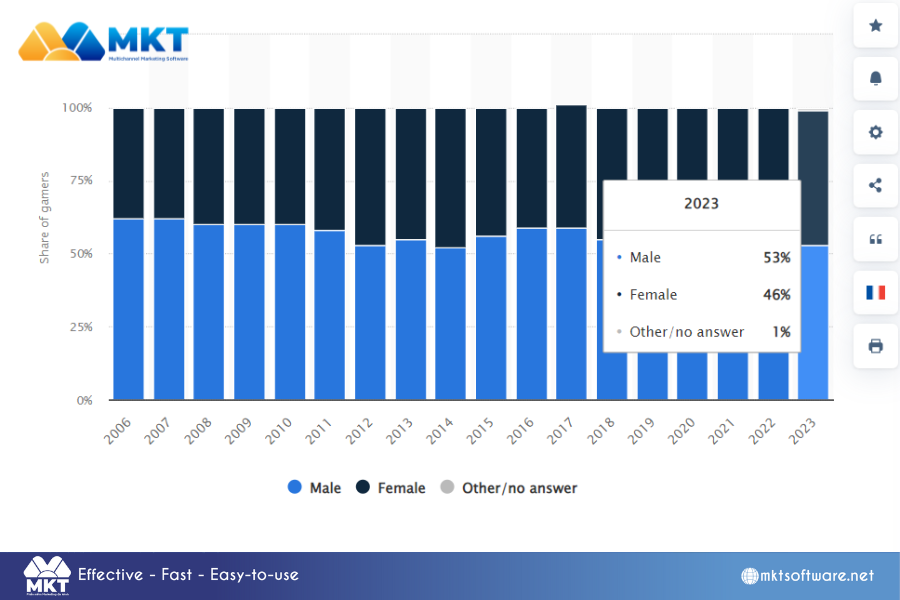
II. Top 5 best video game marketing strategies
Fortunately, there are various game marketing strategies that you can implement immediately, whether you’re about to launch a new game, have already launched, or are seeking to increase traffic. Employ these strategies and case studies to gain traction and popularize your game.
1. Influencer collaborations and partnerships
Influencer marketing has revolutionized the way mobile and video games are promoted. Partnering with relevant gaming influencers who have a dedicated following can significantly increase a game’s visibility and reach. By utilizing content created by influencers, such as gameplay videos, reviews, and endorsements, developers can tap into the influencer’s audience and create buzz around their games.
Influencers have become an integral part of the gaming industry for several reasons:
- Reach: Influencers boast vast audiences that span different geographies and demographics. A single post or live stream can reach millions of viewers, offering global exposure that few other marketing methods can match.
- Trust: Fans often view gaming influencers as friends or peers, making their opinions and recommendations highly influential. If an influencer endorses a game, their audience is likely to consider playing it.
- Engagement: The interactive nature of platforms like Twitch allows influencers to engage with their audiences in real-time, fostering a sense of community and keeping viewers invested in the content.
- Content creation: Influencers consistently produce content centered around the games they play. This content, ranging from reviews and playthroughs to highlights and memes, provides ongoing exposure and helps sustain interest over time.

Case study: Fortnite and Travis Scott’s Virtual Concert
Epic Games’ Fortnite is well-known for its innovative approaches to engaging players. One of their most successful marketing strategies involved a collaboration with Grammy-nominated artist Travis Scott. The “Astronomical” event in Fortnite featured a virtual concert by Scott, attracting over 12.3 million concurrent players, marking it as the game’s largest event ever.
The event wasn’t just a passive viewing experience. Instead, Fortnite’s virtual world transformed in sync with the music, offering players an interactive and immersive experience. The success of this strategy lies in its understanding of the gaming community’s desire for new, shared experiences and the fusion of gaming with elements of pop culture.
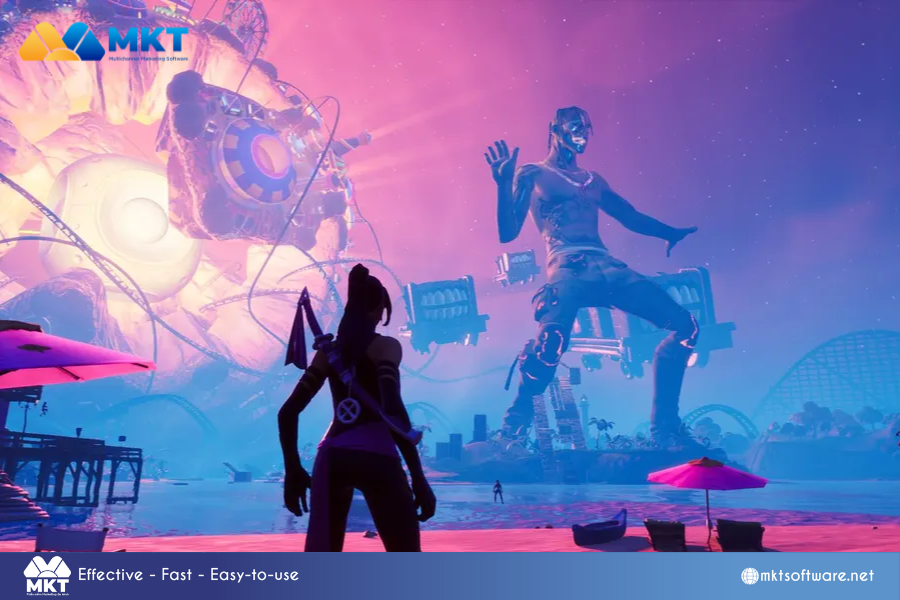
2. Content marketing in gaming
Content marketing in the gaming industry extends beyond merely promoting a product. It’s about adding value to the gaming experience, enhancing player engagement, and building a deep connection with the audience. Content marketing in gaming can take various forms, including but not limited to:
- Game trailers and teasers: These provide a glimpse into the game, generating excitement among potential players. They typically showcase gameplay, hint at the storyline, and highlight game mechanics. Trailers are an effective way to create hype and anticipation before the game’s release.
- Gameplay videos and live streaming: These allow potential players to see the game in action. Platforms like Twitch and YouTube have millions of users who spend hours watching their favorite gamers play. It’s an opportunity for audiences to learn strategies, tips, and tricks while experiencing the game’s atmosphere.
- Blogs and articles: These can include in-depth guides, tips, tricks, game lore, behind-the-scenes development processes, and any other written content that provides value to the player.
- Podcasts and interviews: An emerging trend in the gaming industry, these offer insights into the game development process, host discussions about game theory, or even explore storytelling within the game universe.
- Social media interaction: Developers engage with fans on social media platforms, answering questions, sharing insights, and teasing upcoming features or releases, which fosters a sense of community and direct connection with players.

However, creating high-quality, creative content is not always easy. Understanding this challenge, the market has seen the emergence of software solutions that support the creation of high-quality and creative content, often integrating AI. One notable example, widely trusted by businesses, is Content AI software.
With a wide range of features for quickly generating creative content, Content AI can assist businesses in:
- Managing large volumes of content, including folders, images, posts, and tags
- Keyword-based Writing: Simply enter the keyword you want to use, choose the writing style and AI model, and Content AI will generate relevant content quickly.
- Source-based Writing: Content AI can take an existing source and transform it into a unique, SEO-optimized piece of content by incorporating keywords, ensuring originality and avoiding plagiarism.
- Product review Writing: Craft compelling product reviews that highlight key features, pros, cons, and user experiences to attract customers and increase sales.
- Creating advertising content: Developing captivating and professional ad headlines that stand out and draw in customers.
- Writing email marketing content: From welcome emails to outreach and product information emails, Content AI covers it all.
- Enhancing online shopping experiences: This feature can be called AI in ecommerce. Content AI can generate product descriptions, highlight benefits, create top-selling product titles, make comparisons, and describe characteristics and features of products on platforms like Amazon.
- Automatic video creation: Content AI can also assist in generating video descriptions, titles, scripts, and YouTube tags.
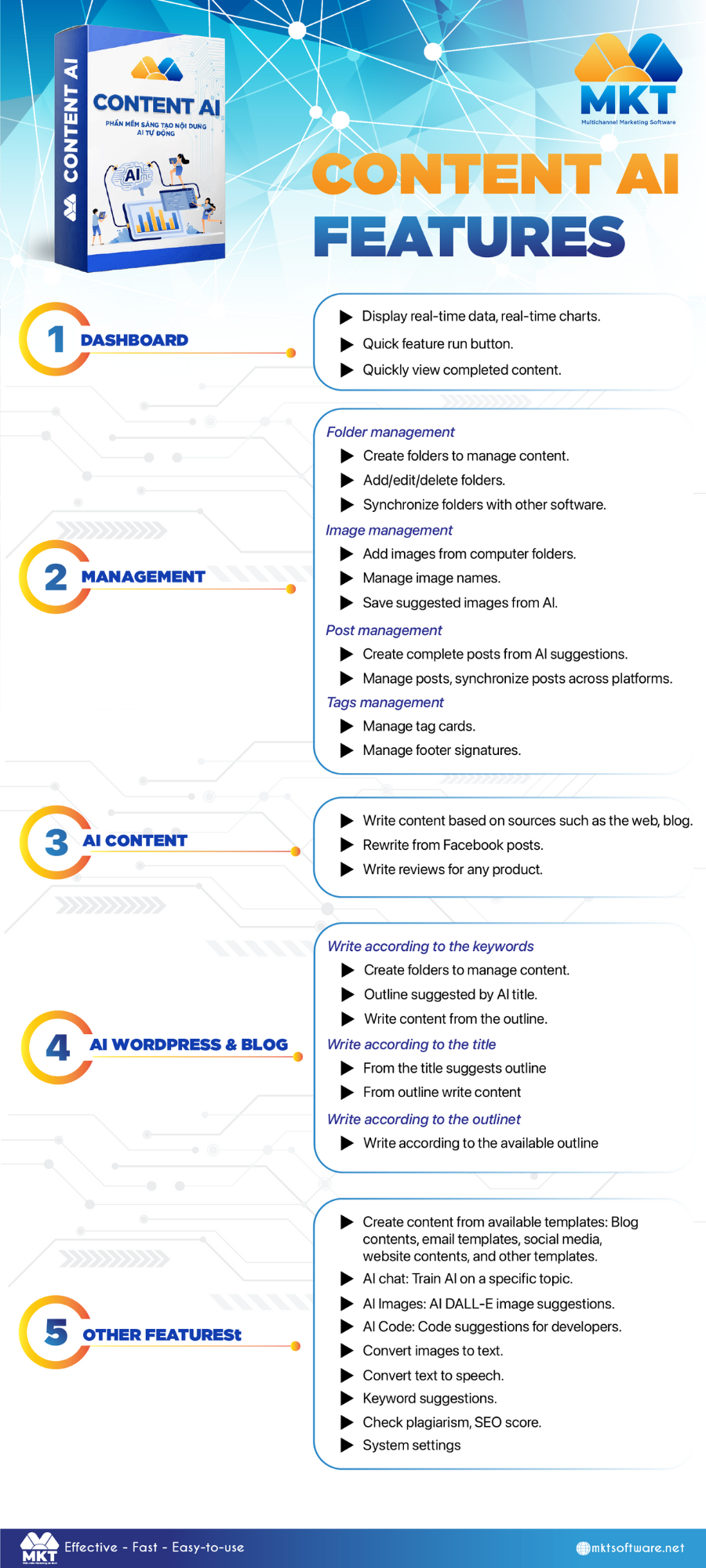
Case Study: Cyberpunk 2077 and Its Diverse Content Marketing Strategy
Cyberpunk 2077, developed by CD Projekt Red, is a prime example of a multifaceted content marketing strategy. Despite post-launch controversies, the anticipation and buzz generated before the game’s release were monumental, largely due to their marketing approach.
- Pre-launch trailers and teasers: Over the years, Cyberpunk 2077 released multiple trailers, each offering glimpses into the game’s world, story, characters, and gameplay. Their trailers garnered millions of views on YouTube, sparking interest and conversation.
- Celebrity endorsement: The inclusion of well-known actor Keanu Reeves added a unique element to their campaign. His appearance at the E3 2019 conference to announce his role in the game became a viral moment, significantly contributing to the hype.
- Behind-the-scenes content: CD Projekt Red regularly shared behind-the-scenes videos titled ‘Night City Wire’ episodes, diving deep into various aspects of the game, from lore to gameplay mechanics, further engaging their audience.
- Social media engagement: Their social media strategy was a cornerstone of their campaign, with regular updates, fan interactions, and announcements. Their Twitter account was particularly active, engaging in conversations and even embracing memes related to the game.
- Partnerships: Cyberpunk 2077 employed a unique strategy of partnering with various brands for limited-edition products, ranging from energy drinks to cars, which extended their presence and visibility even beyond the traditional gaming circles.

3. Community building in gaming
In the video game industry, building a community is crucial for long-term success. A well-engaged community not only keeps players invested in the game but also contributes to its longevity. Active and committed players can help sustain a game’s popularity for years.
Creating a community in gaming goes beyond simply having a player base. It’s about fostering a shared space where players can interact with each other and with the game developers. Here are some key elements of effective community building in gaming:
- Player engagement: Developers can engage directly with players by listening to their feedback and responding to their needs. Regular updates, patches, and improvements based on player input are common methods of engagement.
- Shared experiences: Multiplayer and cooperative gameplay, in-game events, and competitions provide shared experiences that strengthen the sense of community among players.
- Player support: Offering forums, help centers, and responsive customer service ensures that players feel supported and heard, enhancing their engagement with the game.
- User-generated content: Encouraging players to create and share their own content, such as game mods, fan art, and gameplay videos, can foster a strong sense of ownership and commitment within the community.
- Social media interaction: Utilizing platforms like Twitter, Reddit, and Discord to engage in dialogue with players, share updates, and address concerns can create a stronger connection between game developers and players.

Case Study: Among Us and its use of community engagement
Among Us, developed by InnerSloth, is a prime example of how community engagement can propel a game to success. Although released in 2018, it wasn’t until mid-2020 that Among Us surged in popularity. The game’s simplicity, combined with its emphasis on social interaction, made it highly engaging for players. However, it was the community engagement strategies that sustained and boosted its popularity:
- User-generated content: Among Us benefited immensely from content created by users. Twitch streamers and YouTubers playing the game with friends generated hilarious and relatable content, which was shared across various platforms, reaching a wide audience and attracting new players.
- Active social media presence: InnerSloth maintained an active presence on social media, sharing updates, engaging with players, and even showcasing fan-created content, fostering a sense of camaraderie and involvement within the community.
- Responsiveness to feedback: InnerSloth was attentive to player feedback, consistently updating the game and addressing issues raised by the community. When the game’s popularity soared, instead of rushing to release a sequel, they chose to focus on improving the current game based on player feedback, a decision that was well-received by the community.
- Support for the modding community: Among Us also has a thriving modding community. InnerSloth’s support for this community and the user-generated content it produces added another layer to the game’s appeal and community strength.

In summary, the unprecedented success of Among Us can be attributed to the power of community engagement in video gaming. By encouraging user-generated content, being responsive to player feedback, and leveraging social media for community interaction, InnerSloth transformed a simple game into a global phenomenon.
4. Leveraging social media platforms
In the digital age, social media platforms like X (formerly known as Twitter), Instagram, and YouTube have become essential tools for generating buzz around new games. These platforms provide a dynamic and immediate way to connect with the gaming community and build anticipation for upcoming releases.
- X (Twitter): With its real-time updates and trending hashtags, X allows game developers to post teasers, announce release dates, and engage in direct conversations with gamers. It’s an excellent platform for creating a buzz and keeping players informed.
- Instagram: Known for its visually appealing format, Instagram is ideal for sharing in-game screenshots, concept art, and behind-the-scenes content. It helps in building a strong visual identity for the game and maintaining continuous engagement with fans.
- YouTube: As a video-centric platform, YouTube is perfect for releasing game trailers, gameplay previews, and developer diaries. These videos give gamers an immersive look into the game’s world, creating excitement and anticipation.
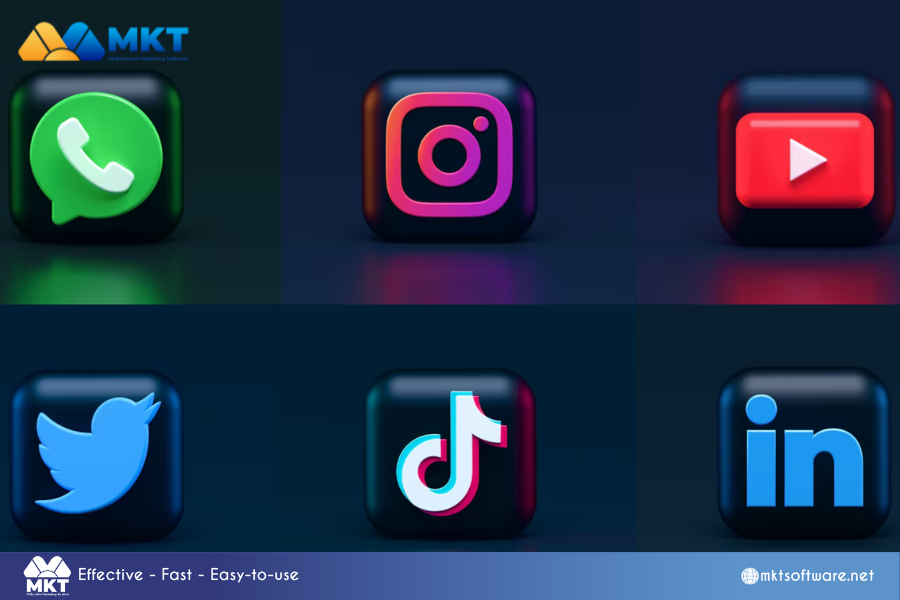
These platforms also offer interactive engagement opportunities through giveaways, Q&A sessions, and live streaming, which help foster a sense of community and excitement. In a time when gamers are constantly searching the internet for the next big release, social media becomes a vital tool for creating the buzz that drives interest and anticipation.
Case study: Apex Legends and Its Launch Strategy on Twitch
The launch strategy of Apex Legends, developed by Respawn Entertainment and published by Electronic Arts, offers a textbook example of effectively leveraging a streaming platform for game marketing.
Unlike traditional marketing campaigns, Apex Legends was launched without any pre-release hype or advertising. Instead, Respawn focused on a “surprise” launch strategy leveraging Twitch, the world’s leading live streaming platform for gamers.
- Influencer partnerships: On launch day, Respawn partnered with top gaming influencers and streamers, including Shroud, Dr Disrespect, and Ninja. These streamers were among the first to play the game live on their Twitch channels, instantly exposing Apex Legends to their millions of followers.
- Twitch rivals: Respawn also collaborated with Twitch to host the Apex Legends Challenge, a two-part competitive event that took place within a week of the game’s release. This event featured 48 of the biggest streamers on Twitch and provided high-level exposure for the game.

This strategic use of Twitch and influencer partnerships resulted in staggering success for Apex Legends, with over 2.5 million players within the first 24 hours and 50 million players in the first month. This case study demonstrates the power and potential of social media and streaming platforms in video game marketing.
5. AR and VR in video game marketing
Augmented Reality (AR) and Virtual Reality (VR) are not only transforming the gaming experience but also revolutionizing video game marketing. These technologies offer unique and immersive ways to engage audiences, providing several advantages in the marketing space:
- Immersive experiences: AR and VR can create experiences that traditional marketing methods simply can’t match. They give players the feeling of being inside the game, enhancing their emotional connection to the content and making the marketing message more impactful.
- Interactive demos: AR and VR allow for interactive game demos, giving potential players a taste of the gameplay before making a purchase. These immersive demos leave a lasting impression that can influence purchasing decisions.
- Memorable campaigns: AR and VR campaigns stand out due to their uniqueness and innovation, making them highly effective at grabbing attention in a crowded market.
- Innovative brand Image: The use of cutting-edge technology like AR and VR can position a game as innovative and forward-thinking, boosting its brand image.

Case Study: Pokémon GO and the impact of AR
Pokémon GO, developed by Niantic in collaboration with Nintendo, is an exemplary case of the power of AR in video game marketing. The game took the world by storm in 2016, largely due to its innovative use of AR technology.
- Word-of-mouth: The novelty of seeing Pokémon in real-world environments, thanks to AR, led to significant word-of-mouth marketing. Players excitedly shared screenshots and experiences, organically promoting the game within their networks.
- Media coverage: The innovative AR technology used in Pokémon GO generated extensive media coverage, increasing the game’s visibility and attracting new players.
- Public events: Niantic hosted public events at real-world locations where players could gather to catch rare Pokémon. These events not only boosted player engagement but also provided additional marketing and publicity opportunities.

III. Conclusion
Achieving success in the competitive gaming industry requires more than just a great game. Effective marketing strategies are essential to stand out and reach your target audience. Staying updated with market trends and continuously adapting your marketing efforts is crucial. By implementing the strategies discussed and analyzing their results, game developers can significantly enhance their chances of success in this rapidly evolving landscape.













